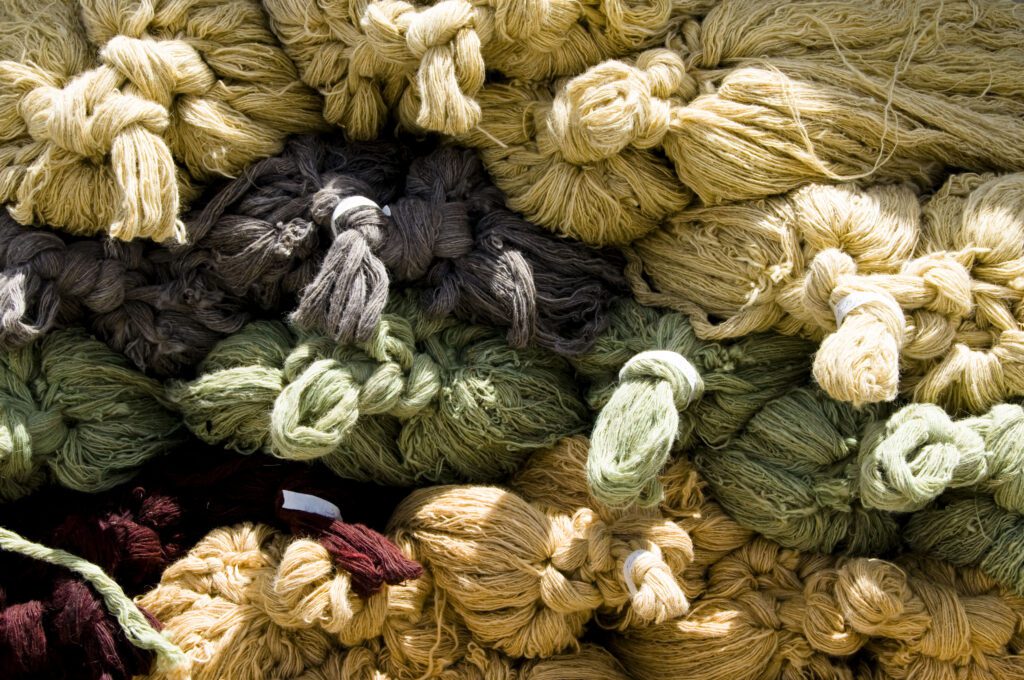The Thread of Creation: Coloring Wool with Nature’s Palette

A forgotten art, it can be easy to ignore the dyes that capture the dazzling tones of nature’s palette when coloring the wool for each thread of a fine carpet. For centuries, dyemasters have passed down meticulously perfected recipes through generations. These writings provide instructions to transform everyday plants into dazzling hues. At Orley Shabahang, we pride ourselves in harnessing these modern day alchemists’ mastery. Read on to learn more about what makes our colors so special in the world today.
While other makers may settle for the fast and easy approach when it comes to dyes, we pride ourselves on taking the time required to be faithful to this art. The only materials to be utilized can be found in the leaves, fruits, and sticks all around us. Ingredients as varied as pomegranate rinds, walnut skins, madder root, pure indigo, and many more play their part in the dyemasters’ recipes. Free from caustic chemicals, these artisans can dip their hands directly into their mixtures. The exact proportions of each ingredient utilized only speaks to a small part of the process.

From Raw Wool to Vibrant Yarns
If you recall the great pains that we take in handspinning the raw wool to preserve its life, and lanolin, then you understand the important part that natural oil plays in our rugs. The high lanolin content and asymmetric spin of our yarn creates unique tones, though the process takes longer. A lack of homogenization within the dye vats allows the lanolin-heavy yarn to interact with the dyes in compelling ways. This dynamic variation of colors throughout the yarns provide the abrash prized in fine carpets. The colors produced are natural and kind to the eye, while also simultaneously vibrant and subtle.

Setting the Tone of Our Colors
Dyed wool must be washed, and that requires clear, running, natural river water. Without chemical dyes, the wool provides no pollution to the water, maintaining the organic nature of the entire Orley Shabahang process. In fact, natural elements in the river water only enhance the colors. Preserving the high lanolin content also pays dividends in the steadfast nature of the dye. The complete immersion of the dye in the wool keeps the colors rich throughout the washing. Allowed to bake in the sun afterward to set the patina, the wool will only grow richer and more nuanced in tone.
Organic vegetable dyes, working straight off of nature’s vast palette, produce results that chemical dyes could never hope to achieve in coloring wool. While the process may take longer, require more expertise, and cost more to produce, the results make it all worthwhile. Next week, return to this space, and see how we weave together all of the pieces of this process.
